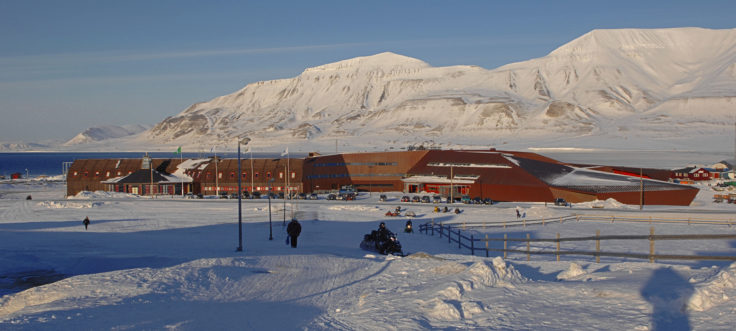Svalbard Integrated Earth Observing System (SIOS)
- Start date
- 1 October, 2010
- End date
- 31 October, 2013
Svalbard Integrated Earth Observing System (SIOS) is an international infrastructure project. There are 26 partners from Europe and Asia involved. The essential objective is to establish better coordinated services for the International Research community with respect to access, data and knowledge management, logistics and training.
The Norwegian government defines SIOS as a prioritized project and offers to host its initiation. SIOS is in its preparatory phase and will coordinate and develop existing and new Research Infrastructure at Svalbard. The Research Infrastructure will continue to be nationally owned by the countries which first established it. SIOS- Preparatory Phase is financed by EU and coordinated by the Research Council of Norway. The European Strategy Forum on Research Infrastructures (ESFRI) has accepted SIOS on the European roadmap (ESFRI Roadmap). The ESFRI Roadmap identifies new Research Infrastructures of pan-European and Global interest corresponding to the long term needs of the European research communities, covering all scientific areas.

SIOS – an integral Earth Observing System
SIOS will establish an upgraded and integral Earth Observing System based on already existing infrastructure, in order to better understand the ongoing and future climate changes. This means that the system, not only will study the single processes, but additionally look at the interaction of all levels between the five spheres biosphere, geosphere, atmosphere, cryosphere and hydrosphere. SIOS shall establish joint services for all partners and provide coordination which will supply added value to all partners beyond what their own research would provide in solitude. The joint services will benefit the whole International Polar Research Community, and will make SIOS the leading polar research platform in the Arctic.
The Knowledge centre – a central contributor of better access and more collaboration
The goal is to improve collaboration between research stations and simplify access to research results. This will be done through the establishment of a Knowledge Center in Longyearbyen. The Center will contribute to better coordinated research services and access to observations, data, logistics, education, research laboratories and research results. This will in turn contribute to increased knowledge, more openness and promote research and research infrastructure cooperation at Svalbard. SIOS will additionally build up close cooperation with other ESFRI projects that plan activities in the European Arctic, existing regional research networks in the European Arctic and to pan-Arctic initiatives such as the Sustained Arctic Observing Network (SAON).
Svalbard- an important arena for climate change investigations
The Arctic region will probably experience the most severe climate change worldwide with an anticipated warming of four to eight degrees (annual average) and a significant increase in precipitation until the end of the 21st century. Svalbard is consequently an important arena for investigations of environmental and climate change. Additionally, it is acknowledged a need for a better overview of Svalbard as a research platform, and a political need for better research infrastructure coordination.
Environmental advantages:
- Svalbard is well positioned in a region with large gradients between mild (Atlantic) oceanic and harsh polar conditions
- Svalbard is set in a High Arctic location remote from the major northern land masses where the other major Arctic monitoring sites are all located.
- Svalbard is exposed to influences from the complete Northern hemisphere
- Svalbard provides excellent opportunities to study marine and terrestrial ecosystems
- Svalbard has the only station below the polar cusp of Earth’s magnetic field
Infrastructural advantages:
- Svalbard is a region which already has a substantial, research infrastructure established (The Ny-Ålesund international science village, The University Centre in Svalbard (UNIS) and the international research facilities in Longyearbyen, Hornsund and Barentsburg, as well as some facilities at the coal mine sites of Svea and Pyramiden).
- Extensive institutionalized International Cooperation for more than 15 years between institutions from about 20 countries, with the Ny-Ålesund Science Managers Committee (NySMAC), the Longyearbyen Science and Education Forum (LySEF) coordinating committees and the Svalbard Science Forum (SSF).
- High data transfer capacity between Svalbard and the Norwegian mainland and, in the future, between Longyearbyen and Ny-Ålesund.
- Svalbard has the infrastructure to study both the upper and lower atmospheric layers
- Unique potential for use of satellite data (high overpass rate, on-site data collection and pre-evaluation)
- Excellent flight connections between Svalbard and the Norwegian mainland year-round
- Harbour facilities for research vessels at several settlements (Longyearbyen, Ny- Ålesund, Barentsburg)
